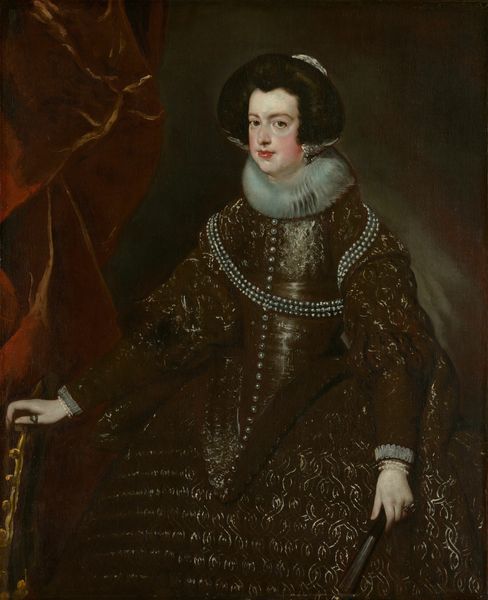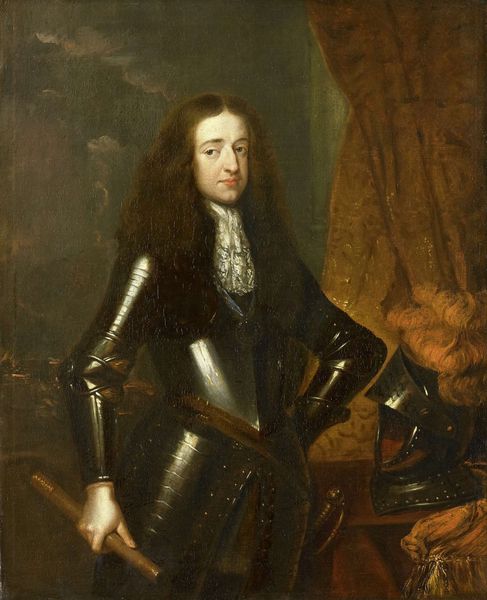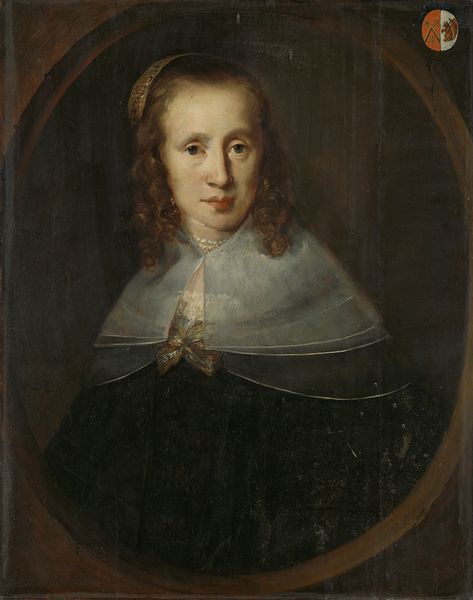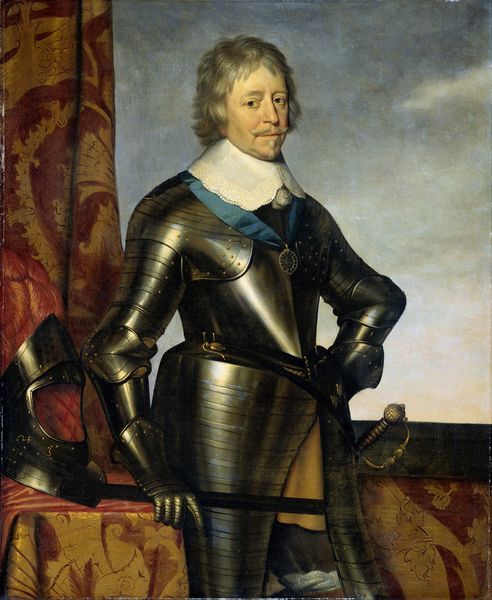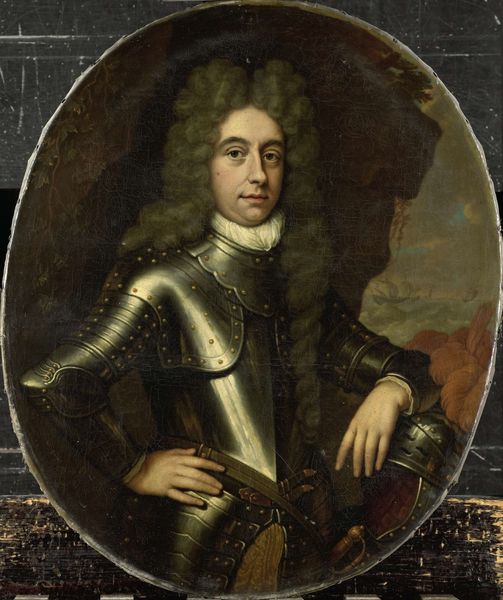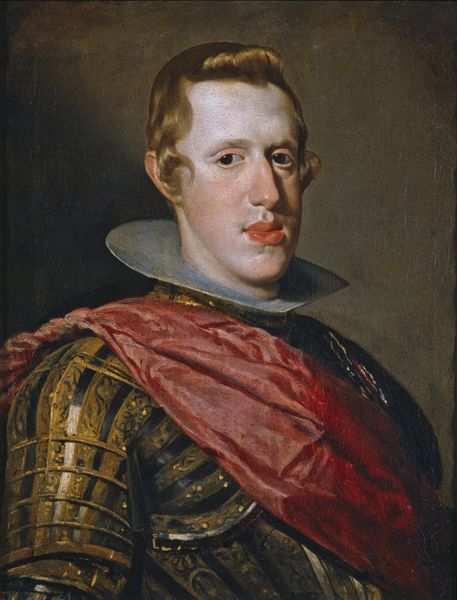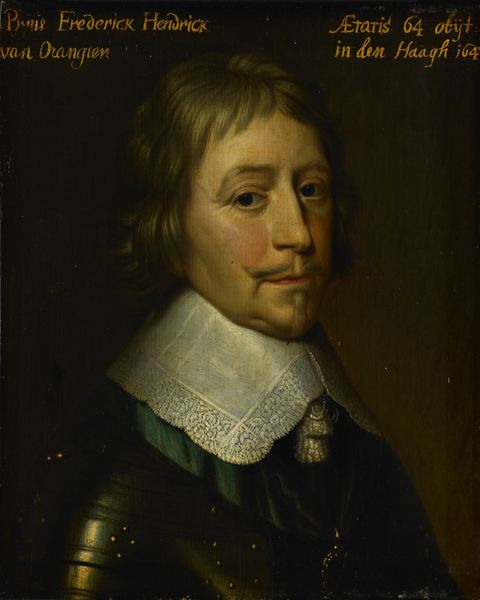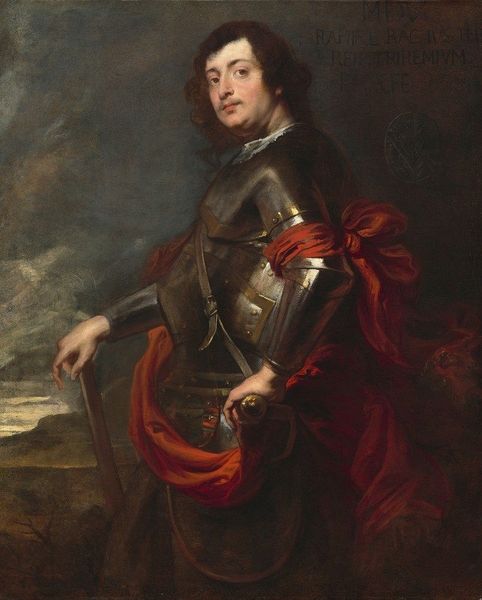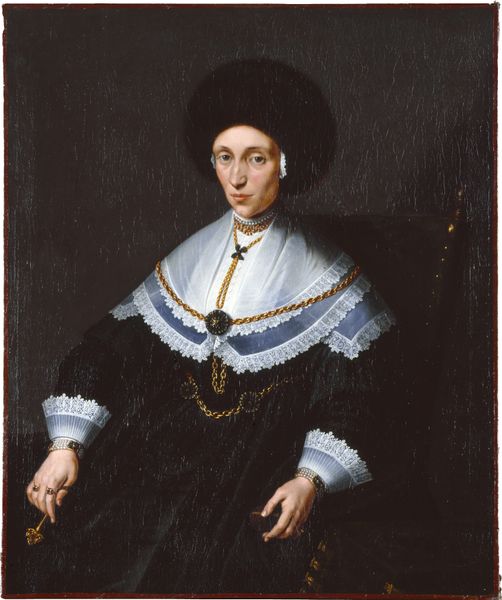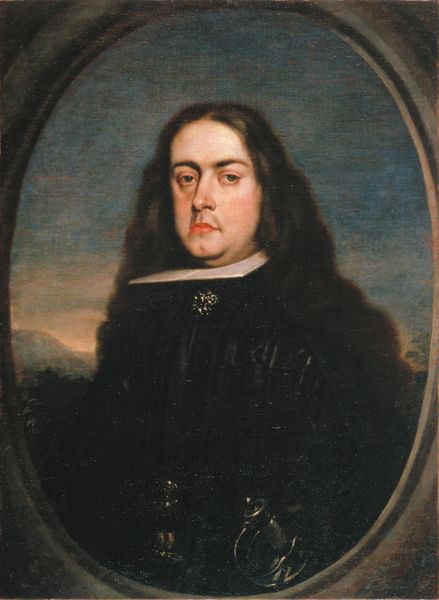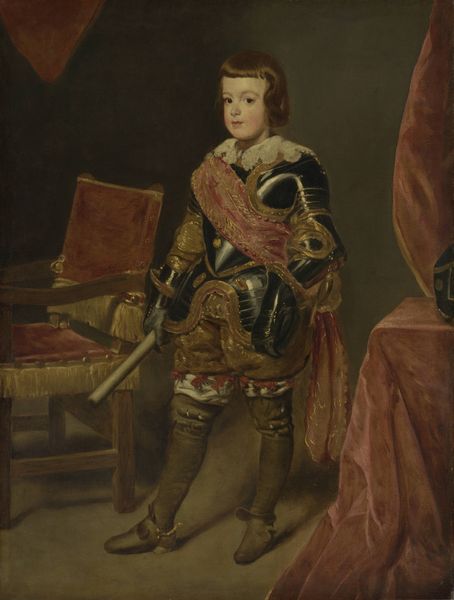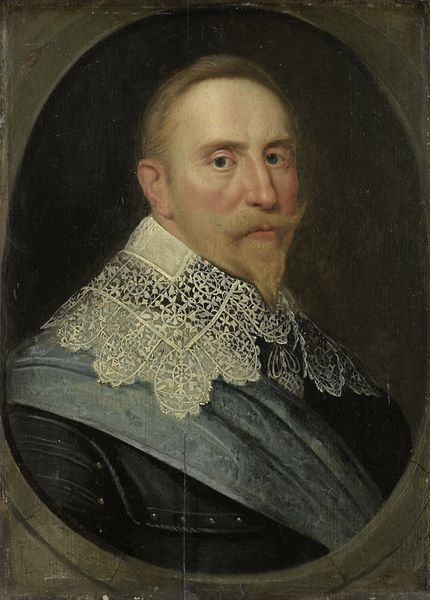
oil-paint
#
portrait
#
baroque
#
oil-paint
#
figuration
#
history-painting
#
academic-art
Copyright: Public domain
Curator: This is Claudio Coello’s portrait of Charles II of Spain, rendered in oil. It presents the monarch in a moment of formal stillness. What strikes you first about it? Editor: Honestly, the somber mood. The colors are muted, almost mournful. There’s this heavy darkness engulfing him. It's all brown hues with few exceptions. Curator: Well, Coello, working in the late Baroque style, was very strategic. He wanted to convey Charles' authority, yes, but also his human vulnerability. He presents Charles II as the last of the Spanish Habsburgs, ruling a decaying empire and struggling with well-documented physical disabilities, something the stark realism emphasizes. Editor: Look at the layering of fabric, the weight of that chain, it speaks to the labour and artistry involved. Gold filigree details in the fabrics give a tangible sense of royal ornamentation while the soft handling of the light and shadows humanizes this royal figure. It makes you consider what life was like for those making these displays of power. Curator: Precisely, consider what the portrait *doesn't* tell us directly. For example, Charles’s health was often publicly debated, with many focusing on who would take the throne after him. How did gender and politics contribute to anxieties about his reign, particularly surrounding the idea of succession and the vulnerabilities projected onto his male body? Editor: The black colour could also suggest that. We consider paintings as purely images sometimes, not as composite materials reflecting global trade. Curator: Certainly. Let's appreciate that the pigments for the colors—or the brushes the artist utilized were all impacted by global exchange at this time. I suppose examining that is integral to fully recognizing how art is manufactured within certain systems and influences, reflecting also those relations between artists and materials and society. Editor: Exactly. Even in royal portraiture, it is those relationships which reveal its complexities. It reveals labour systems or manufacturing conditions we sometimes overlook. Curator: True. This exercise always opens new avenues for reflection! Editor: Yes, absolutely. Examining the labour in addition to art broadens perspectives!
Comments
No comments
Be the first to comment and join the conversation on the ultimate creative platform.
